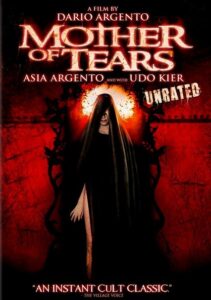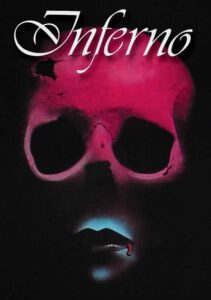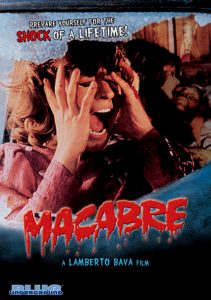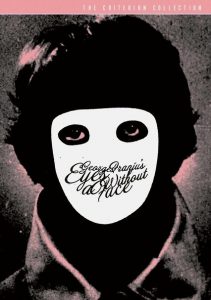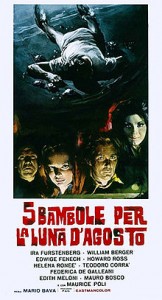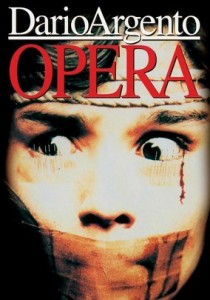Mother of Tears-2007
Director Dario Argento
Starring Asia Argento, Cristian Solimeno
Top 250 Films #227
Top 40 Horror Films #35
Scott’s Review #1,360
Reviewed May 13, 2023
Grade: B+
Mother of Tears (2007) is a film I have a great fondness for and I’ll never forget its debut in my life. It is the very first film my husband and I saw in a movie theater together. So, I’m pretty partial to the nostalgic feeling it emotes on a personal level.
Both fans of esteemed horror director Dario Argento, we cohabitated in the dusty art theater one rainy Saturday evening following a delicious Italian dinner on one of our first dates.
The atmosphere was nearly as perfect as an Argento film itself since he is known for operatic, visceral, and visual perfections.
The film is the concluding installment of Argento’s supernatural horror trilogy The Three Mothers, preceded by Suspiria (1977) and Inferno (1980), and depicts the confrontation with the final “Mother” witch, known as Mater Lachrymarum.
Grisly deaths await several unlucky Italian citizens after an American archaeology student named Sarah Mandy (Asia Argento) innocently releases a demonic witch from her ancient prison. A mysterious urn comes into her possession and when attempted to be restored at the Museum of Ancient Art in Rome, all hell breaks loose.
Sarah harbors a personal connection to the witch since her mother was once embroiled in a feud with her.
Making Mother of Tears a family affair and comfort for viewers of Argento’s work, daughter Asia plays the lead character while younger brother Claudio co-produces the picture along with Dario.
Religion is always a fun theme in horror, especially in the oft-targeted Roman Catholic church. Like The Exorcist did in 1973, and many other horror films followed over the years, the religion is mocked in the kindest of ways.
As an ode to previous works involving children, a child is massacred and more than one baby is sacrificed in the name of Mater Lachrymarum so be forewarned if this is a dealbreaker for some.
Who doesn’t enjoy a coven of witches flocking down on Rome screeching at passerby folks and wreaking havoc on the sacred city now overcrowded with demons?
For the bloodthirsty types who crave a healthy dose of bloodletting Mother of Tears lets the floodgates spill wide open. One poor woman is speared through her private area and upwards while another’s mouth and face are expanded until they pop. Several eyes are violently gouged.
You get the idea.
Recommended is to watch Suspiria and Inferno first for chronological ease but this is not a must and a stand-alone viewing will do just fine.
Nothing can match the sheer madness and visual mastery of 1977’s Suspiria and Mother of Tears is the weakest of the three films but this is not a gripe merely a comparison. They work well together and the final confrontation involving Sarah and Mater Lachrymarum’s fight over a red tunic is the highlight.
The dark texture of the filming mixed with glowing lights and red colors are easily noticeable. This aligns nicely with religious or occult characters like a monsignor, cardinal, and various witches.
The film, though American-made, feels Italian and is quite authentic. Further, it naturally sits well with films of Argento’s heyday, the 1970s, and 1980s. Most if not all actors appear to be Italian or European adding flavor and culture to the experience.
If one has traveled to Rome, many exterior shots of the ancient city appear adding to the enjoyment. Sarah ravages the streets and scurries through the vast train station in one powerful sequence. Since trains are the main mode of transportation in Italy viewers can transport themselves back to a previous trip.
To know Dario Argento is to love him. Mother of Tears (2007) may not measure up to his very best works but it is an entertaining and enthralling visit to the macabre world.
It may or may not win over new fans but it will satisfy existing fans of the director.
